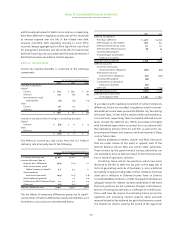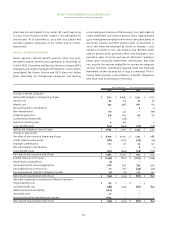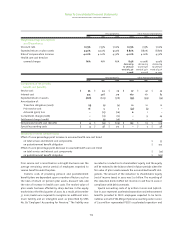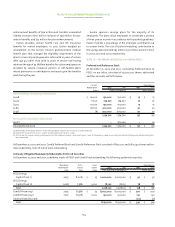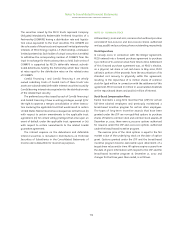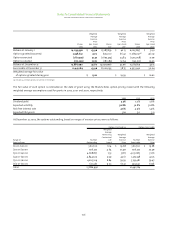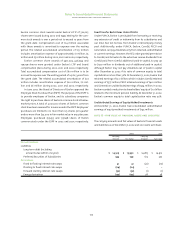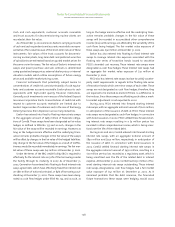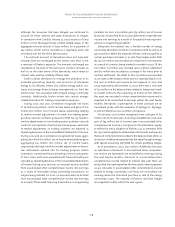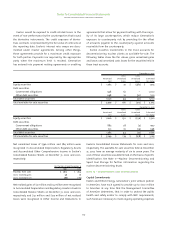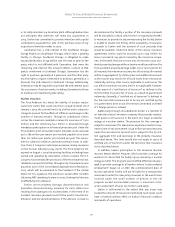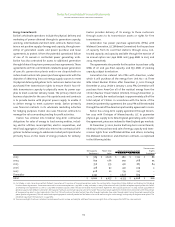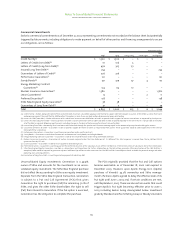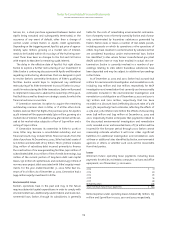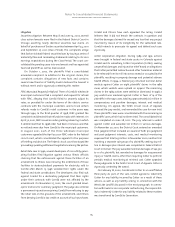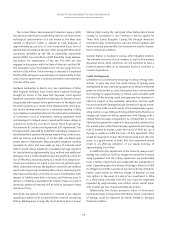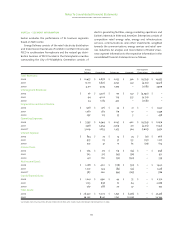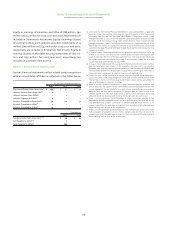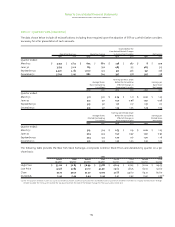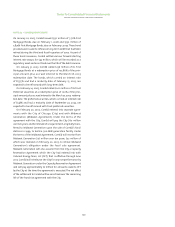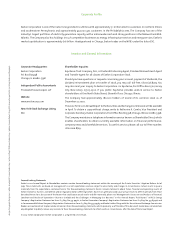ComEd 2002 Annual Report Download - page 113
Download and view the complete annual report
Please find page 113 of the 2002 ComEd annual report below. You can navigate through the pages in the report by either clicking on the pages listed below, or by using the keyword search tool below to find specific information within the annual report.
or to safely maintain any AmerGen plant. Although Exelon does
not anticipate that AmerGen will make any acquisitions in
2003, Exelon has committed to provide AmerGen with capital
contributions equivalent to 50% of the purchase price of any
acquisitions AmerGen makes in 2003.
Generation has a 70% interest in the Southeast Chicago
Energy Project, LLC (Southeast Chicago), which owns a peaking
facility in Chicago. Southeast Chicago is obligated to make
equity distributions of $54 million over the next 20 years to the
party, which is not affiliated with Generation, that owns the
remaining 30% interest. This amount reflects a return of that
party’s investment in Southeast Chicago. Generation has the
right to purchase, generally at a premium, and the other party
has the right to require Generation to purchase, generally at a
discount, the 30% interest in Southeast Chicago. Additionally,
Generation may be required to purchase the 30% interest upon
the occurrence of certain events, including Generation’s failure
to maintain an investment grade rating.
Nuclear Insurance
The Price-Anderson Act limits the liability of nuclear reactor
owners for claims that could arise from a single incident. As of
January 1, 2003, the current limit is $9.5 billion and is subject to
change to account for the effects of inflation and changes in the
number of licensed reactors. Through its subsidiaries, Exelon
carries the maximum available commercial insurance of $300
million and the remaining $9.2 billion is provided through
mandatory participation in a financial protection pool.Under the
Price-Anderson Act,all nuclear reactor licensees can be assessed
up to $89 million per reactor per incident, payable at no more
than $10 million per reactor per incident per year. This assess-
ment is subject to inflation and state premium taxes. In addi-
tion, the U.S. Congress could impose revenue-raising measures
on the nuclear industry to pay claims. The Price-Anderson Act
expired on August 1, 2002 but existing facilities,including those
owned and operated by Generation, remain covered. The U.S.
Congress has extended the provisions of the Price-Anderson Act
related to commercial facilities through 2003.The extension was
passed as part of the Consolidated Appropriations Resolution,
2003, which will be presented to the President of the United
States for his signature. The extension would affect facilities
obtaining NRC operating licenses in 2003. Existing facilities are
unaffected by the extension.
Exelon carries property damage, decontamination and
premature decommissioning insurance for each station loss
resulting from damage to its nuclear plants. In the event of an
accident, insurance proceeds must first be used for reactor sta-
bilization and site decontamination. If the decision is made to
decommission the facility, a portion of the insurance proceeds
will be allocated to a fund, which Exelon is required by the NRC
to maintain, to provide for decommissioning the facility.Exelon
is unable to predict the timing of the availability of insurance
proceeds to Exelon and the amount of such proceeds that
would be available. Under the terms of the various insurance
agreements, Exelon could be assessed up to $124 million for
losses incurred at any plant insured by the insurance compa-
nies. In the event that one or more acts of terrorism cause acci-
dental property damage within a twelve month period from the
first accidental property damage under one or more policies for
all insureds,the maximum recovery for all losses by all insureds
will be an aggregate of $3.2 billion plus such additional amounts
as the insurer may recover for all such losses from reinsurance,
indemnity, and any other source, applicable to such losses. The
$3.2 billion maximum recovery limit is not applicable, however,
in the event of a “certified act of terrorism” as defined in the
Terrorism Risk Insurance Act of 2002, as a result of government
indemnity. Generally, a “certified act of terrorism” is defined in
the Terrorism Risk Insurance Act to be any act, certified by the
U.S. government, to be an act of terrorism committed on behalf
of a foreign person or interest.
Additionally, through its subsidiaries, Exelon is a member of
an industry mutual insurance company that provides replace-
ment power cost insurance in the event of a major accidental
outage at a nuclear station. The premium for this coverage is
subject to assessment for adverse loss experience.Exelon’s max-
imum share of any assessment is $46 million per year. Recovery
under this insurance for terrorist acts is subject to the $3.2 bil-
lion aggregate limit and secondary to the property insurance
described above. This limit would also not apply in cases of
certified acts of terrorism under the Terrorism Risk Insurance
Act as described above.
In addition, Exelon participates in the American Nuclear
Insurers Master Worker Program, which provides coverage for
worker tort claims filed for bodily injury caused by a nuclear
energy accident.This program was modified,effective January 1,
1998, to provide coverage to all workers whose “nuclear-related
employment” began on or after the commencement date of
reactor operations. Exelon will not be liable for a retrospective
assessment under this new policy. However, in the event losses
incurred under the small number of policies in the old
program exceed accumulated reserves, a maximum retro-
active assessment of up to $50 million could apply.
Exelon is self-insured to the extent that any losses may
exceed the amount of insurance maintained. Such losses could
have a material adverse effect on Exelon’s financial condition
and results of operations.
Notes To Consolidated Financial Statements
exelon corporation and subsidiary companies
111


